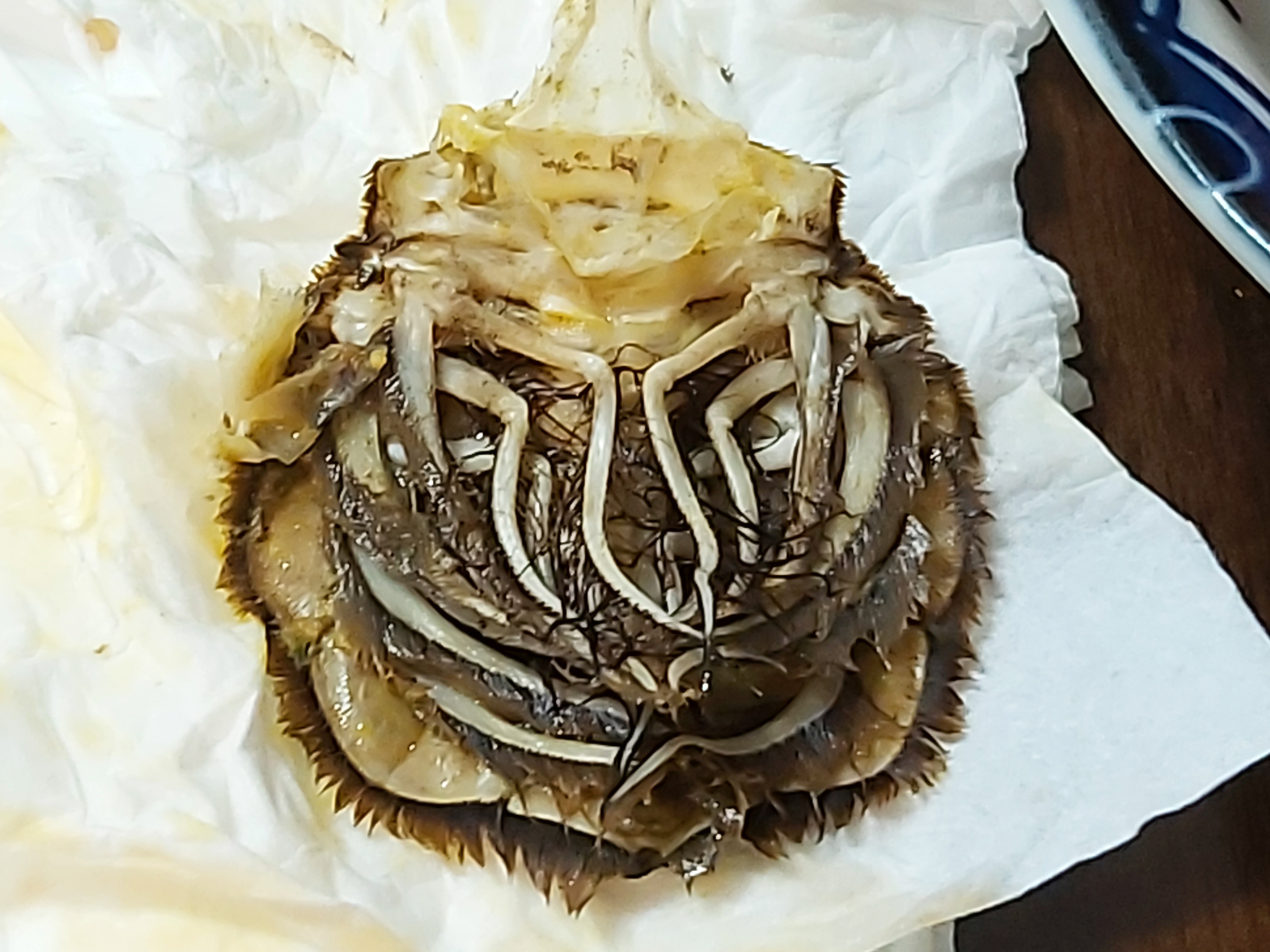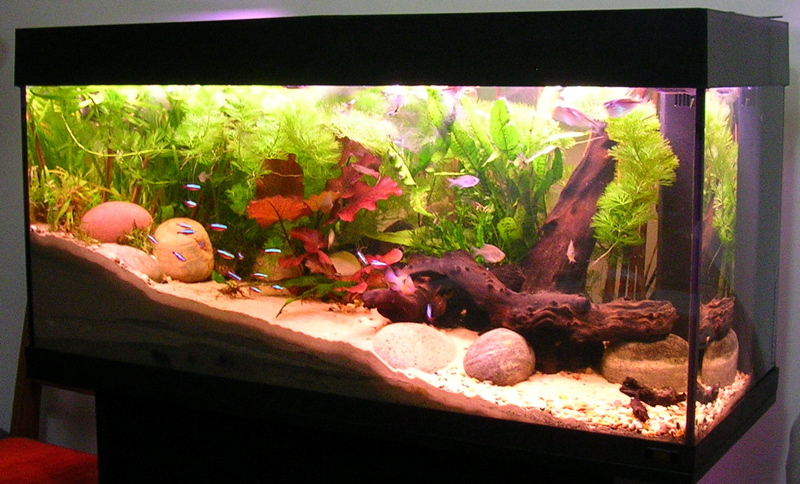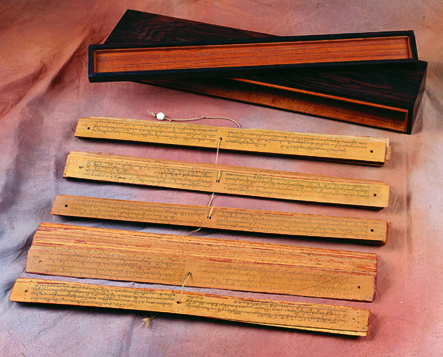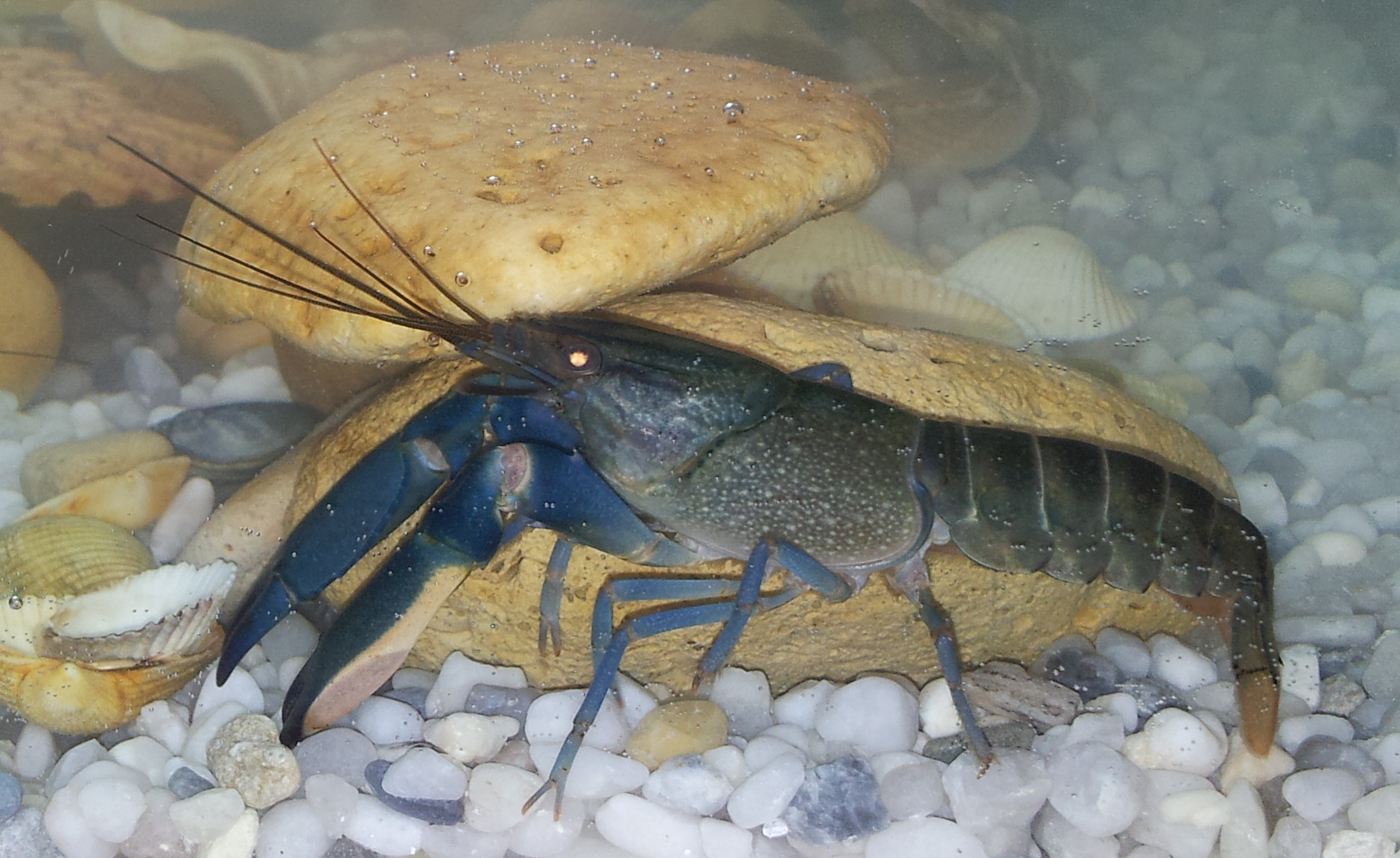|
Cherax Pulcher
''Cherax pulcher'' is a species of crayfish from West Papua in Indonesia. It is popular as a freshwater aquarium species across Asia, Europe, and North America.Patoka, J., Kalous, L., & Kopecký, O. (2015). Imports of ornamental crayfish: the first decade from the Czech Republic’s perspective. Knowledge and Management of Aquatic Ecosystems, (416), 04. Etymology The specific name is derived from the Latin word ''pulcher'', which means "beautiful". The name was chosen due to the species' bright coloration. Discovery The species was first observed being sold for aquariums, where it was ascertained that it likely represented a new species. However, it proved difficult to track down, as dealers' claims as to its location proved difficult to corroborate. It was eventually traced to the Bird's Head Peninsula in New Guinea, where a number of specimens were collected with the help of the Maju Aquarium in Jakarta. Description Males of the species measure in length, while females ... [...More Info...] [...Related Items...] OR: [Wikipedia] [Google] [Baidu] |
Christian Lukhaup
Christians () are people who follow or adhere to Christianity, a monotheistic Abrahamic religion based on the life and teachings of Jesus Christ. The words ''Christ'' and ''Christian'' derive from the Koine Greek title ''Christós'' (Χριστός), a translation of the Biblical Hebrew term ''mashiach'' (מָשִׁיחַ) (usually rendered as ''messiah'' in English). While there are diverse interpretations of Christianity which sometimes conflict, they are united in believing that Jesus has a unique significance. The term ''Christian'' used as an adjective is descriptive of anything associated with Christianity or Christian churches, or in a proverbial sense "all that is noble, and good, and Christ-like." It does not have a meaning of 'of Christ' or 'related or pertaining to Christ'. According to a 2011 Pew Research Center survey, there were 2.2 billion Christians around the world in 2010, up from about 600 million in 1910. Today, about 37% of all Christians live in the Am ... [...More Info...] [...Related Items...] OR: [Wikipedia] [Google] [Baidu] |
Decapod Anatomy
The decapod (crustaceans such as a crab, lobster, shrimp or prawn) is made up of 20 body segments grouped into two main body parts: the cephalothorax and the pleon (abdomen). Each segment may possess one pair of appendages, although in various groups these may be reduced or missing. They are, from head to tail: Cephalothorax Head #antennules # antennae # mandibles # first maxillae # second maxillae The head also bears the (usually stalked) compound eyes. The distal portion of a mandible or maxilla which has a sensory function is known as a palp. Thorax / pereon #first maxillipeds #second maxillipeds #third maxillipeds #first pereiopods #second pereiopods #third pereiopods #fourth pereiopods #fifth pereiopods Maxillipeds are appendages modified to function as mouthparts. Particularly in the less advanced decapods, these can be very similar to the pereiopods. Pereiopods are primarily walking legs and are also used for gathering food. They are also the ten legs from which decapo ... [...More Info...] [...Related Items...] OR: [Wikipedia] [Google] [Baidu] |
Crustaceans Of Indonesia
Crustaceans (Crustacea, ) form a large, diverse arthropod taxon which includes such animals as decapods, seed shrimp, branchiopods, fish lice, krill, remipedes, isopods, barnacles, copepods, amphipods and mantis shrimp. The crustacean group can be treated as a subphylum under the clade Mandibulata. It is now well accepted that the hexapods emerged deep in the Crustacean group, with the completed group referred to as Pancrustacea. Some crustaceans (Remipedia, Cephalocarida, Branchiopoda) are more closely related to insects and the other hexapods than they are to certain other crustaceans. The 67,000 described species range in size from '' Stygotantulus stocki'' at , to the Japanese spider crab with a leg span of up to and a mass of . Like other arthropods, crustaceans have an exoskeleton, which they moult to grow. They are distinguished from other groups of arthropods, such as insects, myriapods and chelicerates, by the possession of biramous (two-parted) limbs, and by their l ... [...More Info...] [...Related Items...] OR: [Wikipedia] [Google] [Baidu] |
Parastacidae
The Parastacidae are the family of freshwater crayfish found in the Southern Hemisphere. The family is a classic Gondwana-distributed taxon, with extant members in South America, Madagascar, Australia, New Zealand, and New Guinea, and extinct taxa also in Antarctica. Distribution Three genera are found in Chile, '' Virilastacus'', ''Samastacus'' and ''Parastacus'', the last of which also occurs disjunctly in southern Brazil and Uruguay. There are no crayfish native to continental Africa, but seven species on Madagascar, all of the genus ''Astacoides''. Australasia is particularly rich in crayfish. The small genus '' Paranephrops'' is endemic to New Zealand. The genera '' Astacopsis'' is endemic to Tasmania, while a further two are found on either side of the Bass Strait – ''Geocharax'' and ''Engaeus''. The greatest diversity, however, is found on the Australian mainland. Three genera are endemic and have restricted distributions ('' Engaewa'', ''Gramastacus'' and ''Ten ... [...More Info...] [...Related Items...] OR: [Wikipedia] [Google] [Baidu] |
Fishkeeping
Fishkeeping is a popular hobby, practiced by aquarists, concerned with keeping fish in a home aquarium or garden pond. There is also a piscicultural fishkeeping industry, serving as a branch of agriculture. Origins of fishkeeping Fish have been raised as food in pools and ponds for thousands of years. Brightly colored or tame specimens of fish in these pools have sometimes been valued as pets rather than food. Many cultures, ancient and modern, have kept fish for both functional and decorative purposes. Ancient Sumerians kept wild-caught fish in ponds, before preparing them for meals. Depictions of the sacred fish of Oxyrhynchus kept in captivity in rectangular temple pools have been found in ancient Egyptian art. Similarly, Asia has experienced a long history of stocking rice paddies with freshwater fish suitable for eating, including various types of catfish and cyprinid. Selective breeding of carp into today's popular and completely domesticated koi and fancy gold ... [...More Info...] [...Related Items...] OR: [Wikipedia] [Google] [Baidu] |
West Papua (province)
West Papua ( id, Papua Barat), formerly Irian Jaya Barat (West Irian), is a province of Indonesia. It covers the two western peninsulas of the island of New Guinea, the eastern half of the Bird's Head Peninsula (or Doberai Peninsula) and the Bomberai Peninsula, along with nearby smaller islands. The province is bordered to the north by the Pacific Ocean, to the west by the Halmahera Sea and the Ceram Sea, to the south by the Banda Sea, and to the east by the province of Central Papua and the Cenderawasih Bay. Manokwari is the province's capital and largest city. West Papua is the second-least populous province in Indonesia (after South Papua). It had a population of 1,134,068 at the 2020 Census, and the official estimate for mid 2021 was 1,156,840. However the total area and population will be reduced by the Parliamentary decision on 17 November 2022 to create a 38th province of Indonesia, comprising Sorong city and the regencies of Sorong, South Sorong, Raja Ampat, Ma ... [...More Info...] [...Related Items...] OR: [Wikipedia] [Google] [Baidu] |
Teminabuan
Teminabuan is a small town in South Sorong Regency, Southwest Papua, Indonesia. The town serves as the administrative capital of South Sorong Regency. It had a population of 11,627 at the 2010 Census and 19,491 at the 2020 Census. The town is located in the southwestern-central part of the Bird's Head Peninsula. The area was bombed between January and March 1967.(by whom?) It is served by Teminabuan Airport Teminabuan is a small town in South Sorong Regency, Southwest Papua, Indonesia. The town serves as the administrative capital of South Sorong Regency. It had a population of 11,627 at the 2010 Census and 19,491 at the 2020 Census. The town is locat .... Notable people * Marlina Flassy - anthropologist and Dean of the Faculty of Social and Political Sciences at Cenderawasih University. *Raja Kaibus, Anggok Kondjol - slaver king, ruler of ''weri'' Ambuam which became Teminabuan References Populated places in Southwest Papua Regency seats of Southwest Papua {{S ... [...More Info...] [...Related Items...] OR: [Wikipedia] [Google] [Baidu] |
Ayamaru Lakes
The Ayamaru Lakes (sometimes spelled Ajamaru) are a group of lakes found in the west-central part of the Bird's Head Peninsula in Southwest Papua, Indonesia. The nearest village to the group is Greemakolo. The many villages around the Ayamaru Lakes speak Ayamaru language, a dialect of the Maybrat language. Etymology The word ''Ayamaru'' comes from combination of the words; ''Aya'' which means water, and ''Maru'' which means lake. People living around the lakes are called ''Ra ro Maru'' (lake people) or Ayamaru people, sub-tribe of the Maybrat people. Physical features The group makes up Lake Ayamaru and Lake Hain. The lakes are surrounded by many low hills. The water in both of the lakes are a clear blue because of the rich material found in the water. There are deep holes in the lakes that lead to underwater caverns. The vivid colors on the north shores of the Ayamaru Lakes are the result of pigmented bacteria in the microbial mats that grow around the edges of the mineral-rich ... [...More Info...] [...Related Items...] OR: [Wikipedia] [Google] [Baidu] |
Cherax Boesemani
''Cherax boesemani'' is a species of crayfish from West Papua in Indonesia (Ajamaru Lakes and the Ajamaru River, which belong to the Kais River drainage and Kepala Burung or Vogelkop Peninsulas). It is popular as a freshwater aquarium pet across Asia, Europe, and North America. ''Cherax boesemani'' is a relatively large crayfish, adult body length is . Variable blues, reds, and oranges are the predominant carapace colours, which has led to extensive selective breeding Selective breeding (also called artificial selection) is the process by which humans use animal breeding and plant breeding to selectively develop particular phenotypic traits (characteristics) by choosing which typically animal or plant ma ... to create new commercial strains, with names such as ''Blue Moon'', ''Supernova'', ''Papuan red'', ''tricolor'' and ''Red Brick''. Hybrids with '' C. pulcher'' commercially known as ''Thunderbolt Blue Moon'' are also available. References External links * P ... [...More Info...] [...Related Items...] OR: [Wikipedia] [Google] [Baidu] |
Cherax
''Cherax'', commonly known as yabby/yabbies in Australia, is the most widespread genus of fully aquatic crayfish in the Southern Hemisphere. Various species of cherax may be found in both still and flowing bodies of freshwater across most of Australia and New Guinea. Together with ''Euastacus'', it is also the largest crayfish genus in the Southern Hemisphere. Habitat Members of the cherax genus can be found in lakes, rivers, and streams across most of Australia and New Guinea. The most common and widely distributed species in Australia is the common yabby (''C. destructor''). It is generally found in lowland rivers and streams, lakes, swamps, and impoundments at low to medium altitude, largely within the Murray–Darling Basin. Common yabbies are found in many ephemeral waterways, and can survive dry conditions for long periods of time (at least several years) by aestivating (lying dormant) in burrows sunk deep into muddy creek and swamp beds. In New Guinea, ''Cherax'' ... [...More Info...] [...Related Items...] OR: [Wikipedia] [Google] [Baidu] |
Subgenus
In biology, a subgenus (plural: subgenera) is a taxonomic rank directly below genus. In the International Code of Zoological Nomenclature, a subgeneric name can be used independently or included in a species name, in parentheses, placed between the generic name and the specific epithet: e.g. the tiger cowry of the Indo-Pacific, ''Cypraea'' (''Cypraea'') ''tigris'' Linnaeus, which belongs to the subgenus ''Cypraea'' of the genus ''Cypraea''. However, it is not mandatory, or even customary, when giving the name of a species, to include the subgeneric name. In the International Code of Nomenclature for algae, fungi, and plants (ICNafp), the subgenus is one of the possible subdivisions of a genus. There is no limit to the number of divisions that are permitted within a genus by adding the prefix "sub-" or in other ways as long as no confusion can result. Article 4 The secondary ranks of section and series are subordinate to subgenus. An example is ''Banksia'' subg. ''Isostyl ... [...More Info...] [...Related Items...] OR: [Wikipedia] [Google] [Baidu] |
Chela (organ)
A chela ()also called a claw, nipper, or pinceris a pincer-like organ at the end of certain limbs of some arthropods. The name comes from Ancient Greek , through New Latin New Latin (also called Neo-Latin or Modern Latin) is the revival of Literary Latin used in original, scholarly, and scientific works since about 1500. Modern scholarly and technical nomenclature, such as in zoological and botanical taxonomy ... '. The plural form is chelae. Legs bearing a chela are called chelipeds. Another name is ''claw'' because most chelae are curved and have a sharp point like a claw. Chelae can be present at the tips of arthropod legs as well as their pedipalps. Chelae are distinct from spider chelicerae in that they do not contain venomous glands and cannot distribute venom. See also * Pincer (biology) * Pincer (tool) References Arthropod anatomy {{Arthropod-anatomy-stub ... [...More Info...] [...Related Items...] OR: [Wikipedia] [Google] [Baidu] |







